| Topic: Aliens Might Exist !!! | |
|---|---|
|
But due to the local groups moving farther away from each other faster than could ever hope to be matched, nothing outside of the local group is reachable The local group? The local group is a small portion of galaxies of which the Milky way is one. Most of the Milky Way galaxy is unreachable for humans. In fact, much of the star system of Sol is unreachable by humans aside from human built machines. The only off-planet destination humans have visited is the Moon. We have the potential ability to reach Mars but that is still years, if not decades away. The next step will likely be some of the larger asteroids and maybe a close proximity comet. A few of Jupiter's moons and Saturn's moons might be a destination but we don't have the technology and it won't exist for a very long time. The SOLar System (Distance not to scale) 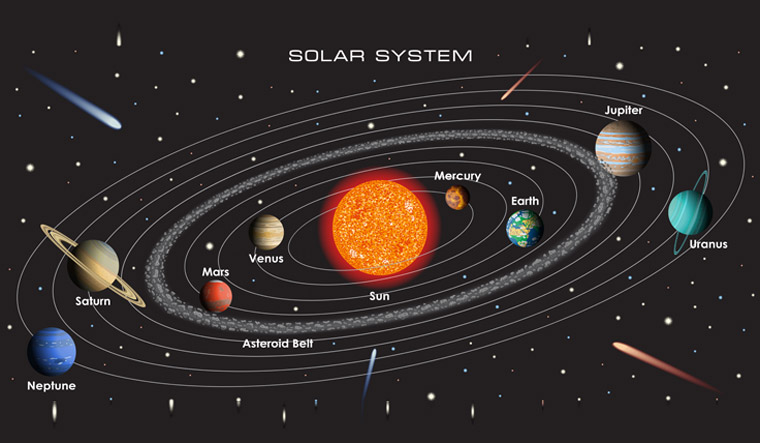
The Heliopause of SOL 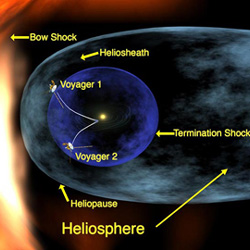
12.5 Light Years from SOL 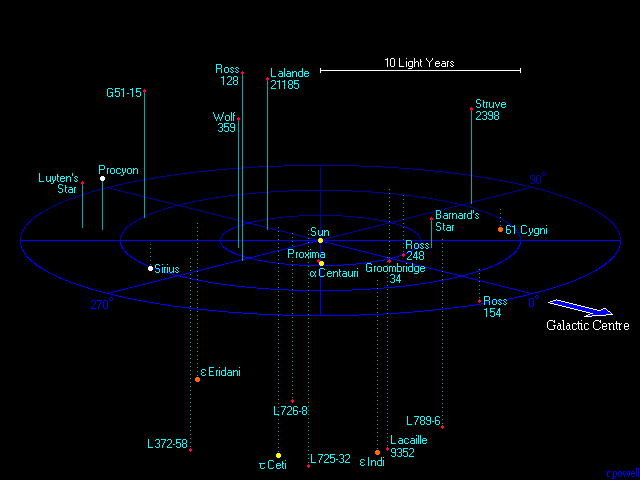
This map shows all the star systems that lie within 12.5 light years of our Sun. Most of the stars are red dwarfs - stars with a tenth of the Sun's mass and less than one hundredth the luminosity. Roughly eighty percent of all the stars in the universe are red dwarfs, and the nearest star - Proxima - is a typical example. Number of stars within 12.5 light years = 33 250 Light Years The Solar Neighbourhood 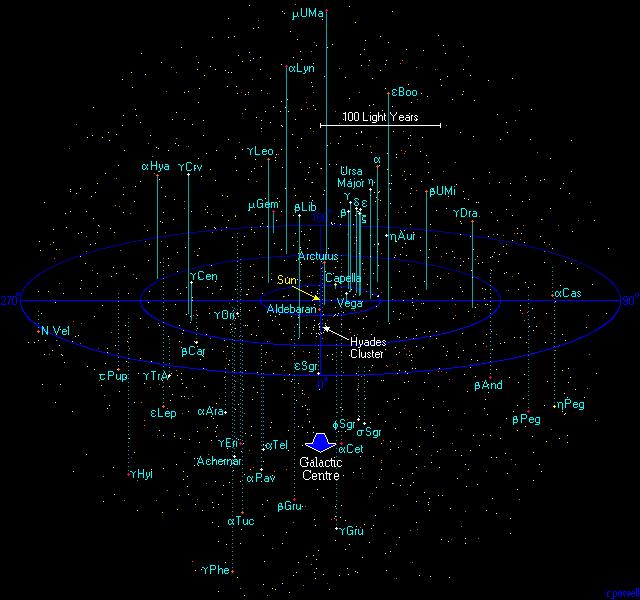
This map is a plot of the 1500 most luminous stars within 250 light years. All of these stars are much more luminous than the Sun and most of them can be seen with the naked eye. About one third of the stars visible with the naked eye lie within 250 light years, even though this is only a tiny part of our galaxy. Number of stars within 250 light years = 260,000 5,000 Light Years The Orion Arm At the speed of light it takes 5,000 years to reach the edge of this area. The light which is there now, left Sol about the same time the pyramids in Egypt were being built. The white shaded area represents stars, not planets. Many stars have planets. 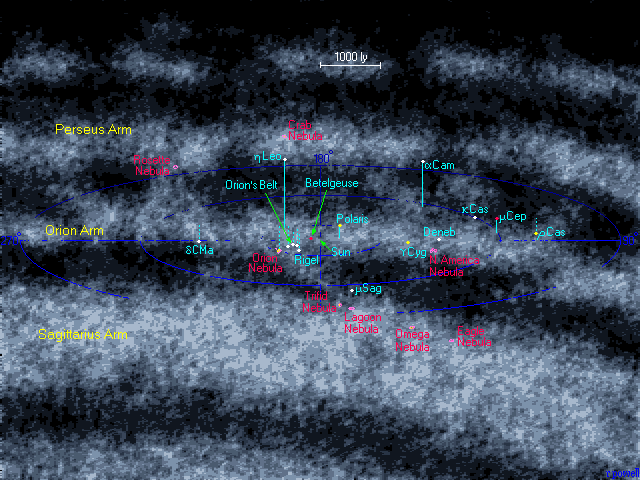
This is a map of our corner of the Milky Way galaxy. The Sun is located in the Orion Arm - a fairly minor arm compared with the Sagittarius Arm, which is located closer to the galactic centre. The map shows several stars visible with the naked eye which are located deep within the Orion arm. The most notable group of stars here are main stars in the constellation of Orion - from which the spiral arm gets its name. All of these stars are bright giant and supergiant stars, thousands of times more luminous than the Sun. The most luminous star on the map is Rho Cassiopeia (ρ Cas) - to us 4000 light years away, it is a dim naked eye star, but in reality it is a huge supergiant star 100 000 times more luminous than our Sun. Number of stars within 5000 light years = 600 million 50,000 Light Years The Milky Way Galaxy 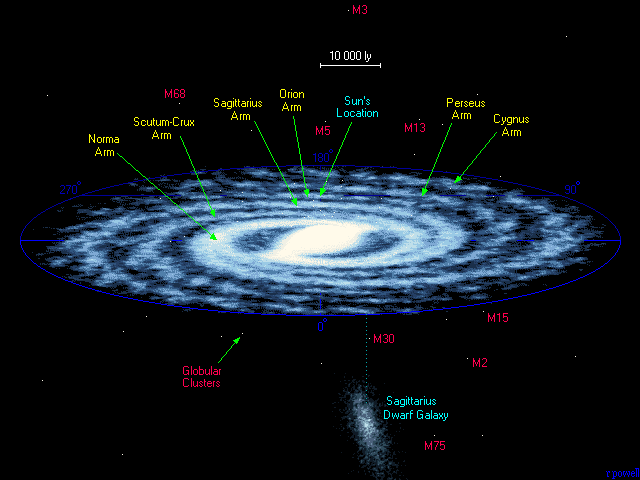
This map shows the full extent of the Milky Way galaxy - a spiral galaxy of at least two hundred billion stars. Our Sun is buried deep within the Orion Arm about 26,000 light years from the centre. Towards the centre of the galaxy the stars are packed together much closer than they are where we live. Notice also the presence of small globular clusters of stars which lie well outside the plane of the Galaxy, and notice too the presence of a nearby dwarf galaxy - the Sagittarius dwarf - which is slowly being swallowed up by our own galaxy. Number of stars within 50,000 light years = 200 billion 500,000 Light Years The Satellite Galaxies 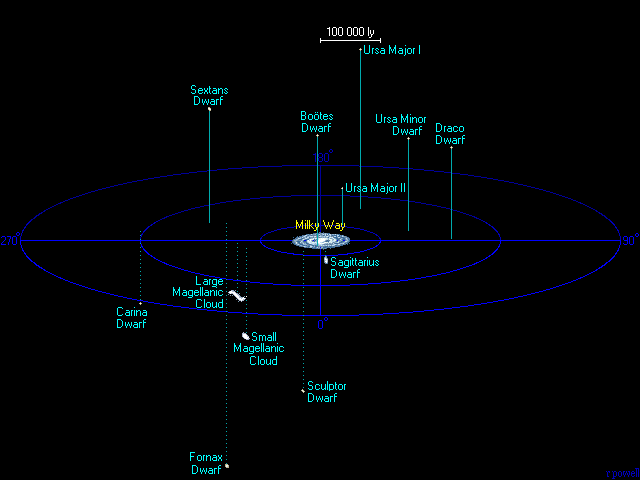
The Milky Way is surrounded by several dwarf galaxies, typically containing a few tens of millions of stars, which is insignificant compared with the number of stars in the Milky Way itself. This map shows the closest dwarf galaxies, they are all gravitationally bound to the Milky Way requiring billions of years to orbit it. Number of large galaxies within 500,000 light years = 1 Number of dwarf galaxies within 500,000 light years = 12 Number of stars within 500,000 light years = 225 billion 5 million Light Years The Local Group of Galaxies 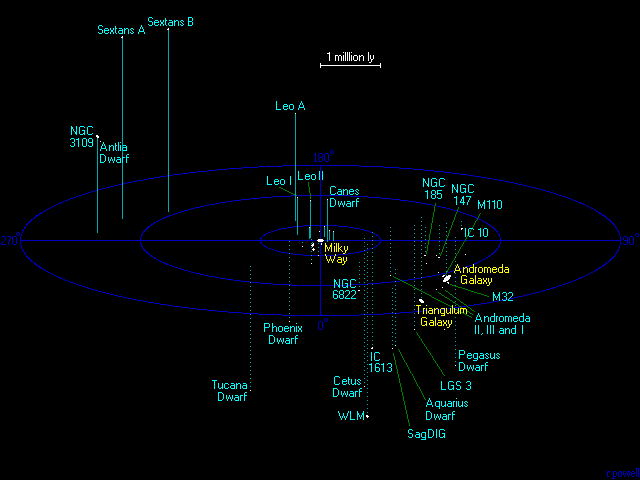
The Milky Way is one of three large galaxies belonging to the group of galaxies called the Local Group which also contains several dozen dwarf galaxies. Most of these galaxies are depicted on the map, although most dwarf galaxies are so faint, that there are probably several more waiting to be discovered. Number of large galaxies within 5 million light years = 3 Number of dwarf galaxies within 5 million light years = 46 Number of stars within 5 million light years = 700 billion 100 Million Light Years SOL The Virgo Supercluster The local group of galaxies is just one of many centred around the massive Virgo Cluster. Collectively, all of these groups and clusters form a unit known as the Virgo Supercluster. 1 Billion Light Years from SOL The Neighbouring Superclusters The distribution of galaxies in the universe is far from regular. They tend to clump together into huge supercluster formations. 14 Billion Light Years from SOL The Visible Universe Although our knowledge of the large scale structure of the universe is incomplete, many large and small scale features are visible right out to the very edge of the visible universe. The entire universe is fairly uniform. Images and data sourced from The Atlas of the Universe Last updated: 30 Jul 2006 Web page created by Richard Powell Astrophysicists Construct Most Complete 3D Map of the Universe, Fill Gaps in Cosmological History 
July 26, 2020 https://scitechdaily.com/astrophysicists-construct-most-complete-3d-map-of-the-universe-fill-gaps-in-cosmological-history/ SDSS - The Sloan Digital Sky Survey http://www.sdss.org/ http://www.youtube.com/watch?v=Ld5kE1k8-Ls eBOSS construction finished in 2020 eBOSS is The Extended Baryon Oscillation Spectroscopic Survey Celestia http://celestia.space/index.html is a 3D astronomy software program created by Chris Laurel. The program allows users to virtually travel through a simulated version of our universe. Celestia can display objects of various scales using OpenGL. Celestia is available for AmigaOS 4, Linux, macOS, Microsoft Windows, iOS, and Android. http://celestia.space/gallery.html 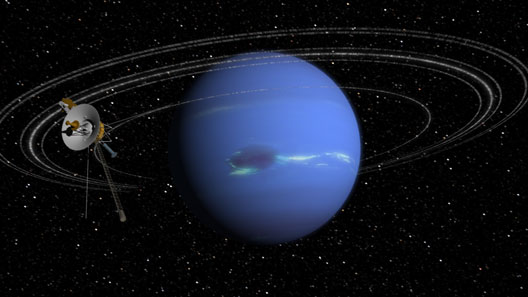
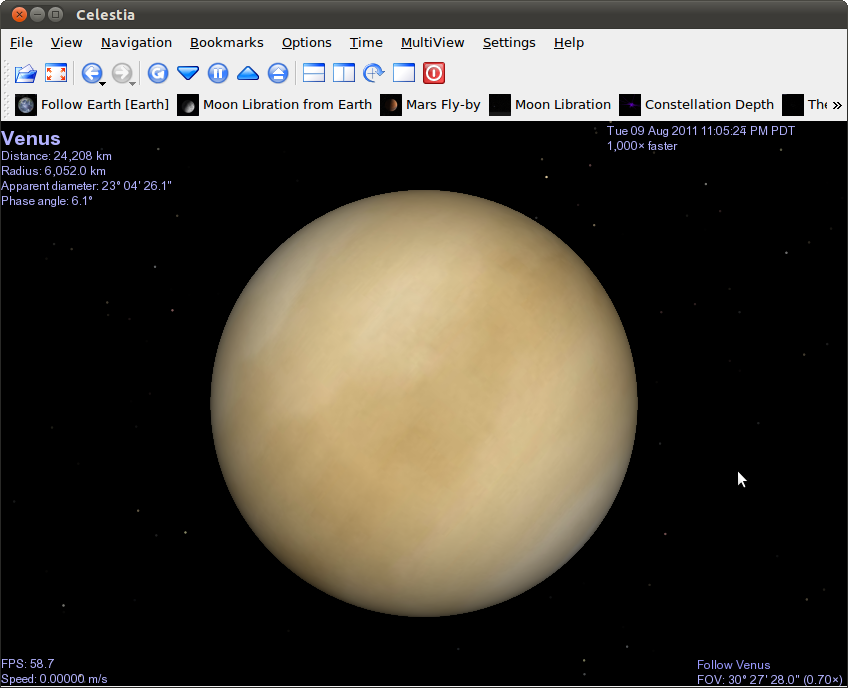
The Celestia Motherlode is a repository for various addons like textures, models or celestial objects for Celestia. Celestia is a free, interactive (real-time), 3D astronomy program. It doesn't just show you the sky as it can be seen from earth as most planetarium software does, but allows you to move to and view the universe from any point between the planets and the stars. The Celestia Motherlode hosts over 10 GB of Celestia addons by various creators, which extend or change the way Celestia renders the universe. http://www.celestiamotherlode.net/ Celestia is a free program. http://celestia.space/download.html I personally have Celestia and all the add-ons which apply to my interests found at the Celestial Motherlode. For a quick size comparison view of the Universe including the scale Metal Ball Studios offers a nice video. http://www.youtube.com/watch?v=NrRPg0pH9xc |
|
|
|
|
|
Edited by
Tom4Uhere
on
Tue 03/23/21 10:12 AM
|
|
|
There's a lot more to the article.
There may be life on our moon sometime very soon. Well, life potential. All sounds silly to me. What would it take to lose 6.7 million forms of life on Earth? How would this affect our moon?
How would 'sometime soon' be defined? The proposed ark base and structure The surface base 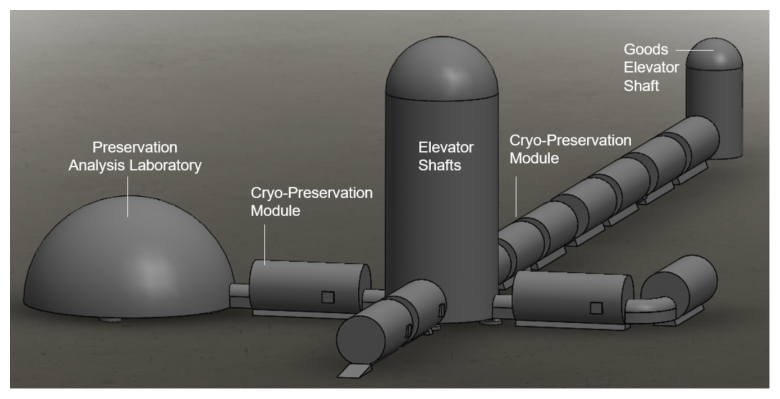
Sub-surface structure 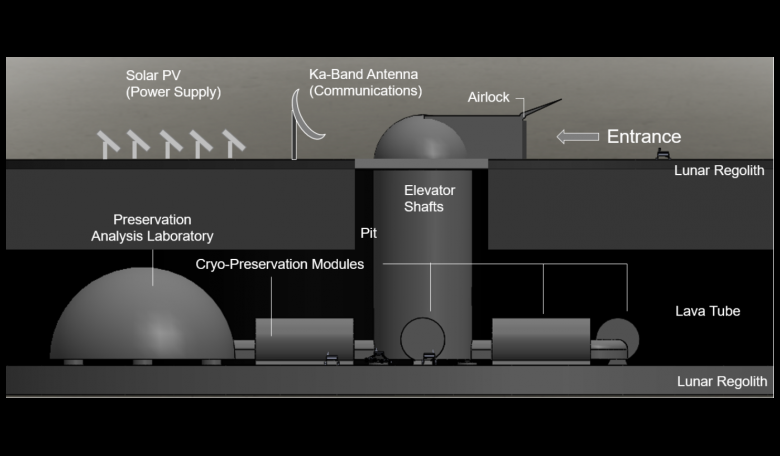
Not all the technology needed for this ambitious project exists yet, but the researchers think that it could realistically be built within the next 30 years, Thanga said.
Quite a claim! Technology which does not exist does not mean it will exist. Plus, 30 years is extremely ambitious even if the technology existed right now. The ark, or gene bank, would be safely hidden in these hollowed-out tunnels and caves sculpted by lava more than 3 billion years ago and would be powered by solar panels above. It would hold the cryogenically preserved genetic material of all 6.7 million known species of plants, animals and fungi on Earth, which would require at least 250 rocket launches to transport to the moon, according to the researchers.
"cryogenically preserved genetic material" is not the same thing as losing 6.7 million forms of life on Earth. "at least 250 rocket launches" represents a very small portion of the proposed mission. Insignificant, really, from the entire start to finished project. Even if the mass is lifted from the Earth to mid-Earth orbit that's still a lot of mass. Plus, that mass will each be moving at tremendous speed. Mass which will have to be then slowed (and eventually, stopped) at its destination. So in addition to 250 rocket launches, there will need to be 250 rocket landings. Plus, control burns, deceleration and orientation corrections. There's a possibility the mass could be collected in mid or high Earth orbit. Then coupled with a different guidance control system, transported to the Moon and set in Lunar orbit, coupled again to a landing guidance and control system. This increases the number of launches and the subsequent mass lifted to allow building of the two special guidance and control systems in space. At least one of which will need to be transported to the Moon as its final destination. Plus the ferry units would need to make multiple Earth-Moon, Moon-Earth transits. Now the Teamsters Union gets involved. Plus, the article mentions nothing about a ferry type transport system. The moon was the obvious choice for an off-world ark for one main reason: It is only a four-day journey from Earth, which means transporting the samples is much easier than taking them to Mars.
Relatively speaking it would be easier but this implies a trip to the Moon is easy, its NOT. Not only is it difficult, its expensive and fraught with dangers. Plus, any increase in mass increases the difficulty, the costs and the chances something can go wrong. Thanga predicts that transporting the samples to the moon will be the most challenging and costly aspect of building the ark, Based on some "quick, back-of-the-envelope calculations," he said.
"quick, back-of-the-envelope calculations"! I thought we were talking about scientists. Anyone can do 'quick, back-of-the-envelope calculations' but it doesn't mean it has any significance. Plus, transporting the actual samples to a completed Lunar Base is additional launches, also where something can go very wrong. However, due to the reduced mass of the payload it would be easier, not more difficult. "It will cost hundreds of billions of dollars to build the ark and transport samples," Thanga said. "But this isn't totally out of the question for international collaborations like the U.N."
More like tens of trillions. Plus, the project wouldn't be governmentally run. Any large, long duration endeavor in space will need to be backed and managed by the public sector. Governments are too unstable and public opinion changes too frequently. Wars and disasters interrupt things. Even so, one aspect of the lunar ark is currently out of reach.
LOL, only one! What we have here is a delusional scientist pushing a pipe dream. Typical of the nature of science documentaries and media-seeking funding strategies. "This is a project that would require real urgency to have a lot of people energized enough to go after it," Thanga said. "I think it could be achieved within 10 to 15 years if needed."
Not in your wildest dreams. This is like saying a home can be built from raw forest with hand tools in a week. I'm amazed Live Science posted this article under NEWS. Live Science is supported by its audience. When you purchase through links on our site, we may earn an affiliate commission.
Sorry, I just don't 'buy it'! How would this affect our moon?
If it were a done deal aside from the construction process and localized change in the immediate area plugging a lava tube could affect pressure balances from its pristine condition. A significant increase in mass would be need to change the Moon's orbital mechanics to a point it would matter but it would change the mass of the Moon so in the very long run it could cause orbital change over time. The 2010 magnitude-8.8 Chile earthquake shortened the day by about 1.26 µs and shifted earth's figure axis by about 8 cm. And the 2004 magnitude-9.2 Sumatra-Andaman earthquake moved the figure axis by about 7 cm.
Which means a body in the near vacuum of space is affected by change within that body. Increases and decreases in mass affect the motion of mass in space. However, this proposal could be considered on-topic. Genetic material on the Moon makes that material aliens. Extraterrestrial aliens. PS: One more thing which must be considered. Solar and cosmic radiation outside the Earth's Van-Allen belt protection. A 'seed vault' implies a long duration storage facility. Possible centuries of storage. We cannot know the effects of this radiation over long duration. 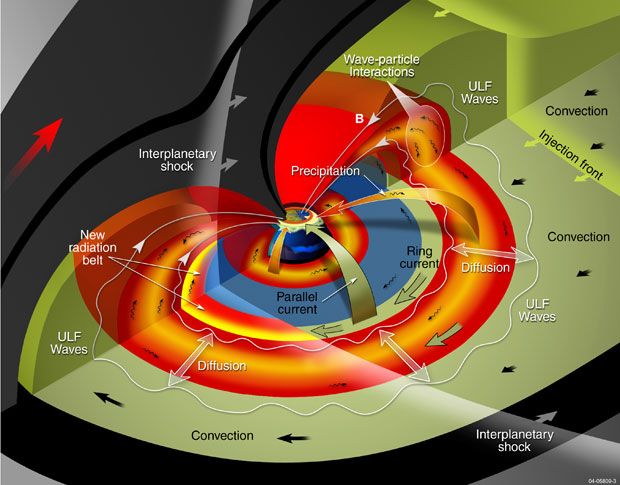
Image source: ieee.org See Also: Radiation Belts with Satellites http://www.nasa.gov/mission_pages/sunearth/news/gallery/20130228-radiationbelts.html Outer belt = 12,000-25,000 miles. Moon = 250,000 miles The Moon is outside the protection of Earth. The Earth has a magnetosphere / The Moon does not. |
|
|
|
|
|
Aliens Might Exist !!!
You may be right as I reckon the guy next door is one 
|
|
|
|
|
|
The Moon will probably last about the samer time as the Earth...4.5 billion or so years. As it gradually contines to move away from the Earth, eventually its fate could be a bit different (thrown into the Sun or thrown out to Mars).
If its final Earth orbit occurs while its moving away from the Sun, anything on it would survive a bit longer (till it collides with something). No, I would not donate my seed to an ark. If there is a catastrophe on Earth requiring a re-population from zygotes, the technology and ability would also likely be destroyed preventing retrieval of those 'seeds'. It would be easier to retrieve genetic material preserved in the middle of Antarctica. The South pole is the best location in all scenarios. Even that may prove a huge undertaking for a civilization remaining on a devastated planet. The whole idea depends on whether someone who knows the location of the ark and how to actually get there and knows how to germinate the zygotes into actual living breathing animals and growing plants survives. Even electronic records would be useless if there is no longer an electrical grid available to the survivors. Plus, the window of such a recovery may expire before the effort can be implemented. The Earth will probably recover eventually but there's no guarantee the human race will. Automated systems might be included but the sequence and timing of such a complex task would require an army of highly specialized machines working without failure. A better method would be the development and use of nano-machines called nano-assemblers and nano-disassemblers but there would need to be an exceedingly dependable quantum computing AI to coordinate it all. Nano-machines could repair the planet by rearranging atoms. Eric Drexler's Engines of Creation talks about this. Engines of Creation 2.0: The Coming Era of Nanotechnology Originally published in 1986, K. Eric Drexler's Engines of Creation laid the theoretical foundation for the modern field of nanotechnology and articulated the amazing possibilities and dangers associated with engineering at the molecular scale. Unique for both its style and substance, the book is today recognized as the seminal work in nanotechnology and has earned Drexler the title of "Father of Nanotechnology." https://www.nanowerk.com/nanotechnology/reports/reportpdf/report47.pdf |
|
|
|
|
|
Edited by
Acquired Taste
on
Sun 04/04/21 03:12 PM
|
|
|
i met a guy years ago buying a 6 pack of beer he was the cashier...he told me he was abducted and wrote a book about it and says he likes to talk about it...he says when he came back every hair on him was grey....he was only 30...we planned a meeting and i chickened out...he really creeped me out a bit...personally i don't think their are aliens but if there are they are really cagey sneaky b*st*rds. of course then you look at my profile pic and wonder wtf?
|
|
|
|
|
|
For me there are no aliens, only souls coming from source.
|
|
|
|
|
|
Perhaps you lot should look up 'Atmospheric Sloughing'......
How much life in the Milkey Way do you think that Earth has spread through it's Biotica Astronauts in Suspended Animation.... We are NOT ALONE..... |
|
|
|
|
|
What the world refers to as aliens, in the Christian community, they are seen as a type of demon. Just as there are different ranks of angels, so it is with evil angels.
|
|
|
|
|
|
Latest out of CERN is that they've opened a rift to a paralell universe and when they adjust the parameters of the experiment whatever is on the other side appears to give evidence that they are an active intelligence and observing the experiment at CERN.
Would explain UFOs if they are advanced enough to send observation craft across the rift. |
|
|
|
|
|
NASA has been hiding the photographs of 3I Atlas and David Sereda has deciphered its path of crossing orbits of planets is definetly showing extreme intelligence. He is a brilliant mathmatician and has determined that it is crossing on mankinds religous dates encompassing all faiths. People trying to get this info out are being interfered with .
|
|
|
|
|
|
Right, I met a lot of them
|
|
|
|
|
|
We don't need to go into space to prove life exists elsewhere.
All we need to do for that is look at what has visited our own planet. That is proof life exists elsewhere otherwise they couldn't come here. That proof goes way back, think of the Dogons in Africa, Roswell, the US government finally admitting Earth has been -and is- visited, allowing US military to speak up about what they've seen. Footage was made public as well. So that's not a reason to go into space. Exploring could be a reason. Or finding another planet where we could live. Although I strongly feel we shouldn't and hope we will not be able to do so for a long long time. There's no reason to go to another planet if we treat the one we got with more respect and treat her well. Going to another planet only means we F up another planet cause that's what mankind does: mess things up. |
|
|
|
|
|
Very well said Crystal. Coverup has been happening since the 1930`s. Mufon has a ton of stored evidence and project camelot recorded interviews with military whistleblowers for 20 years. Pictures of strange technology on the walls of pyramids inEgypt. Unless the public demands the truth they will kept in the dark.
|
|
|
|
|














